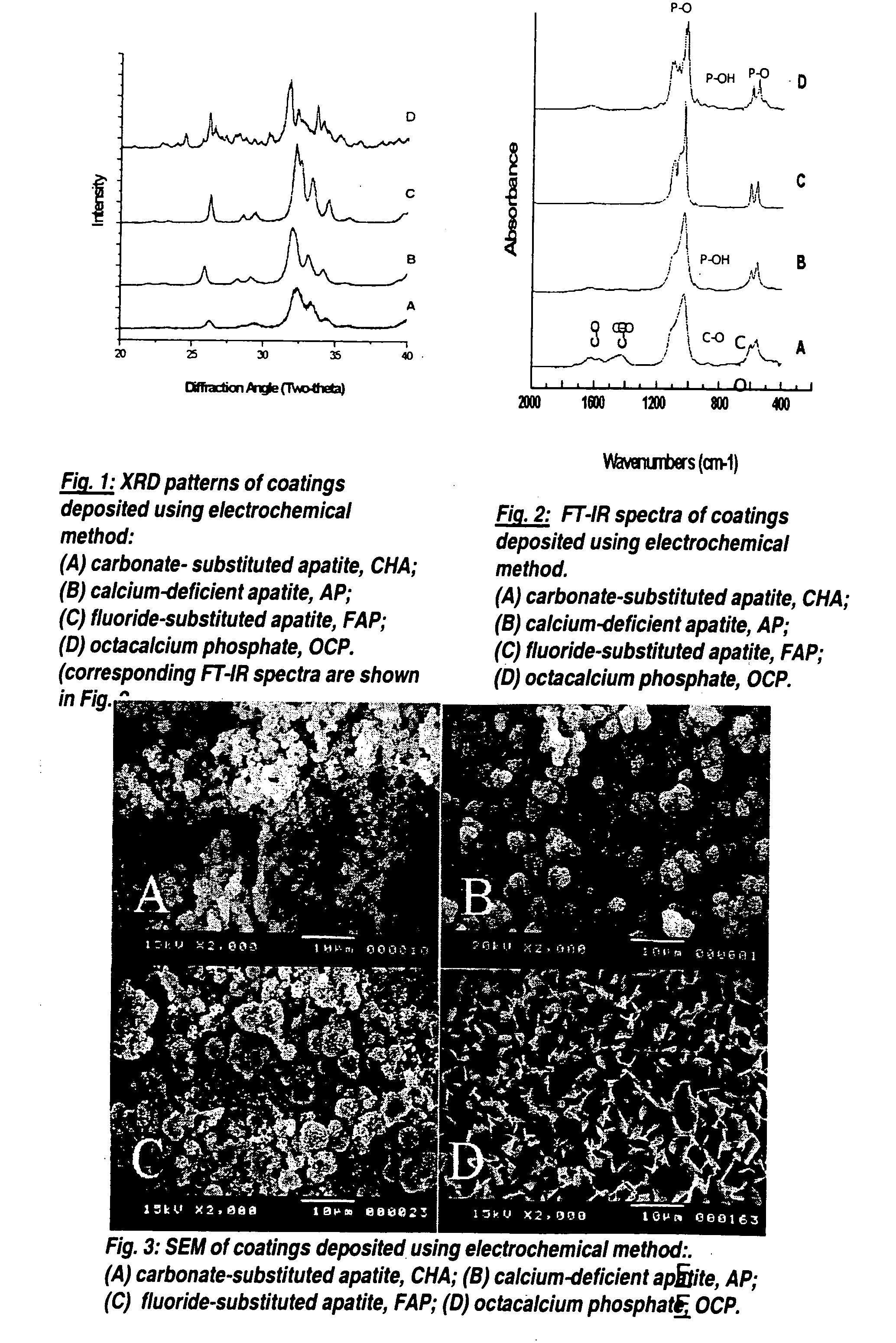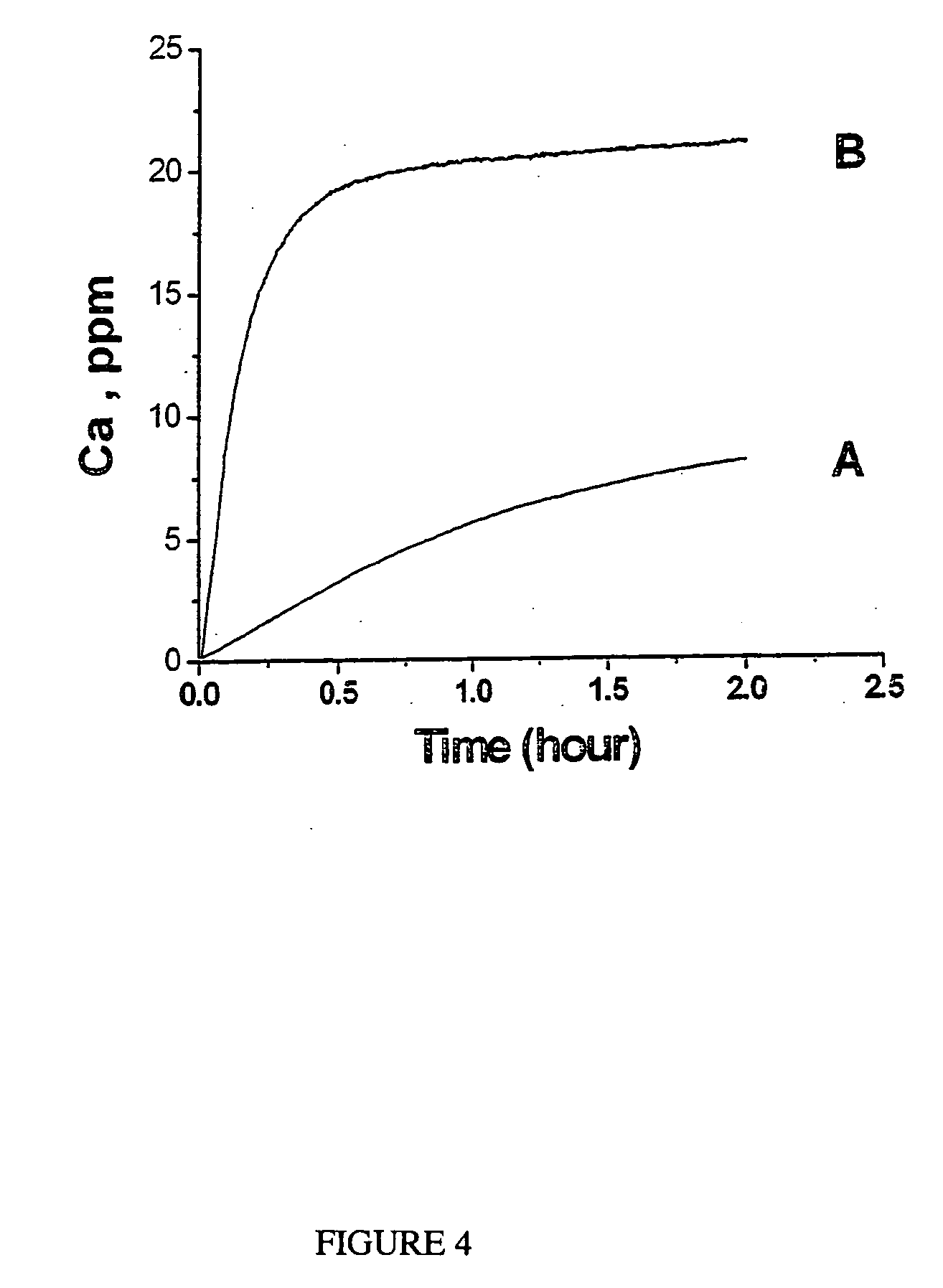Method for producing adherent coatings of calcium phosphate phases on titanium and titanium alloy substrates by electrochemical deposition
a technology of calcium phosphate and electrochemical deposition, which is applied in the field of electrochemical deposition of calcium phosphate phases on titanium or titanium alloy substrates, can solve the problems of low mechanical or fracture strength, inability to use in load-bearing areas, and poor adhesion performance of calcium phosphate phases
- Summary
- Abstract
- Description
- Claims
- Application Information
AI Technical Summary
Benefits of technology
Problems solved by technology
Method used
Image
Examples
Embodiment Construction
[0017] Sample Preparation
[0018] Three (3) types of Ti alloy (Ti6Al4V) substrates and Ti alloy bars with four (4) different surface preparations were used to demonstrate the invention. The three types were: plain Ti alloy plate, 25×25×1.5 mm3, tensile strength bars, diameter, 25 mm, length 42 mm and dissolution cylinders, diameter, 12 mm, length 25 mm. The four kinds of surface preparations were: grit blasted with an apatitic abrasive (MCD abrasive, HiMed, Bethpage); arc-deposited; chemically textured and coated with Co—Cr beads. The plates and dissolution cylinders were grit blasted with apatitic abrasive. The arc-deposited, chemically textured and Co—Cr beaded surfaces were received from Stryker-Howmedica-Osteonics. Arc-deposited means that the Ti coating was deposited by melting Ti wire with an electric arc (high voltage / high current) onto the surface. Chemical treatment was by acid-etching. Co—Cr beaded surfaces were obtained by bonding Co—Cr beads (425-500 microns in diameter) ...
PUM
| Property | Measurement | Unit |
|---|---|---|
| tensile strengths | aaaaa | aaaaa |
| tensile strengths | aaaaa | aaaaa |
| pH | aaaaa | aaaaa |
Abstract
Description
Claims
Application Information
 Login to View More
Login to View More - R&D
- Intellectual Property
- Life Sciences
- Materials
- Tech Scout
- Unparalleled Data Quality
- Higher Quality Content
- 60% Fewer Hallucinations
Browse by: Latest US Patents, China's latest patents, Technical Efficacy Thesaurus, Application Domain, Technology Topic, Popular Technical Reports.
© 2025 PatSnap. All rights reserved.Legal|Privacy policy|Modern Slavery Act Transparency Statement|Sitemap|About US| Contact US: help@patsnap.com



